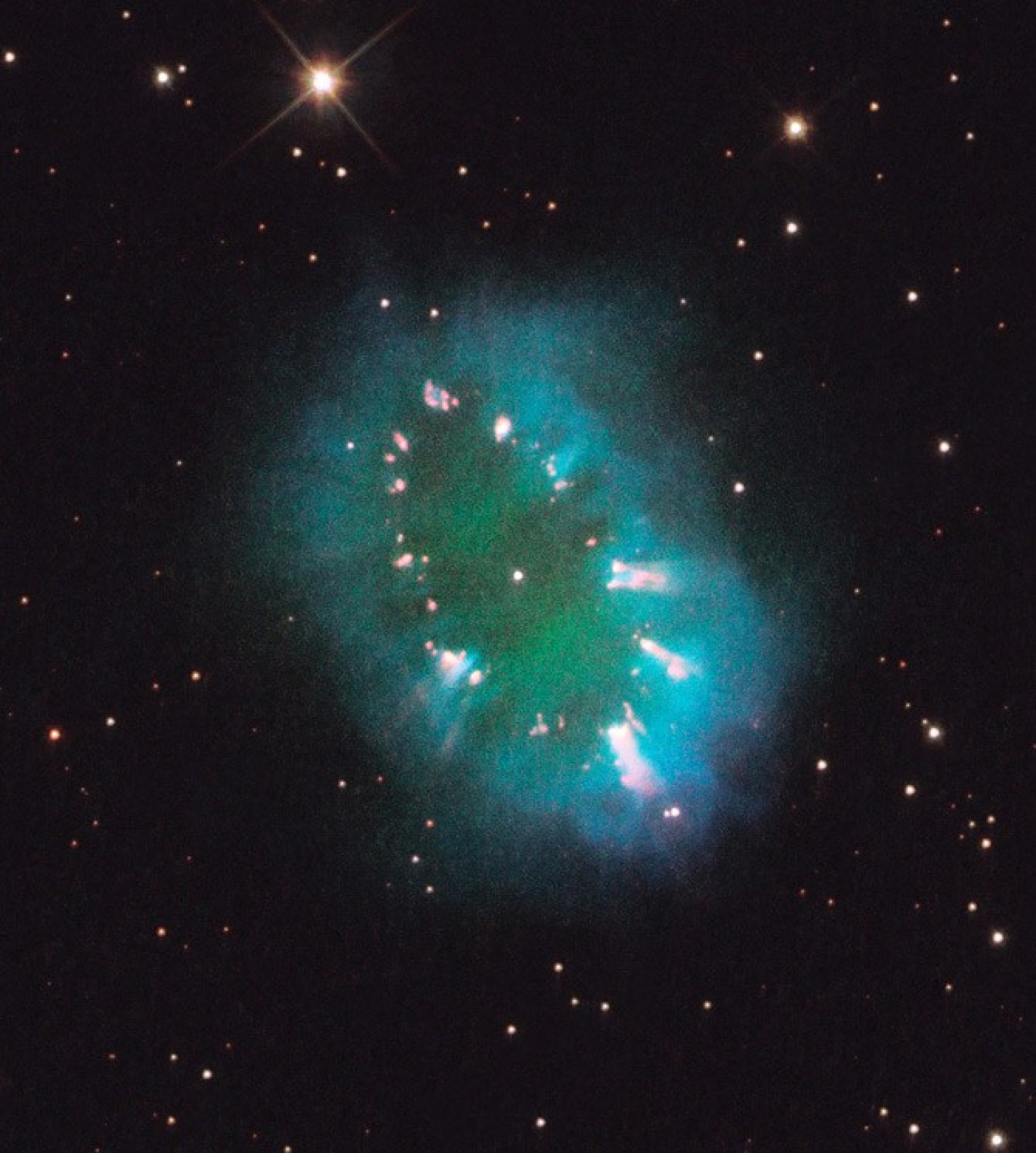Hubble Telescope Captures 'Necklace Nebula'
The "Necklace Nebula" is a dying binary star 15,000 light-years away from Earth. Recently discovered and photographed by NASA's Hubble Space Telescope, reflective gases form a circle of blue, green and red that resemble a jeweled necklace.
"A pair of stars orbiting close together produced the nebula, also called PN G054.2-03.4. About 10,000 years ago one of the aging stars ballooned to the point where it engulfed its companion star," NASA said on its website. "The smaller star continued orbiting inside its larger companion, increasing the giant’s rotation rate."
"The bloated companion star spun so fast that a large part of its gaseous envelope expanded into space. Due to centrifugal force, most of the gas escaped along the star’s equator, producing a ring. The embedded bright knots are dense gas clumps in the ring."
The two stars are about a million miles apart, which is so close in space-length that they appear as one dot in the image. The dying stars orbit around each other about once every 29 hours.
The color are produced by hydrogen (red), nitrogen (green) and oxygen (blue) gases. NASA released the images Thursday. They were taken July 2. The planetary nebula is located in the Sagitta constellation, which resembles an arrow.

© Copyright IBTimes 2024. All rights reserved.





















